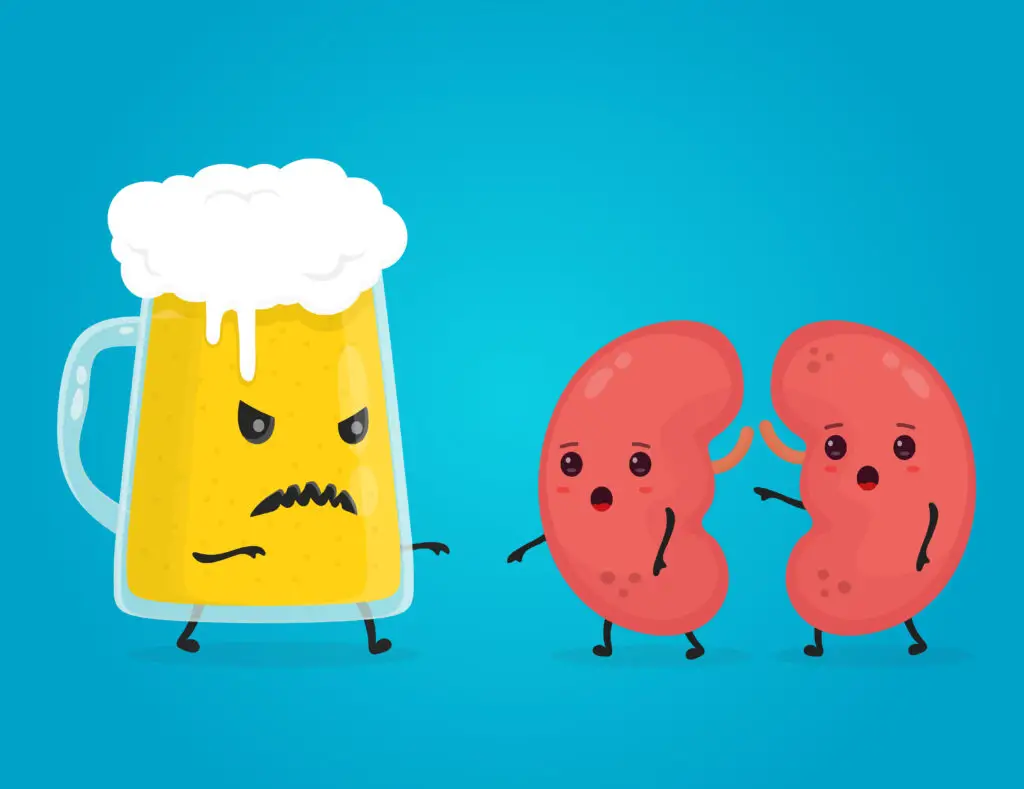Table of Contents
Everyone understands the importance of eating a balanced diet. But what foods and how much should we eat to achieve this goal? A food guide pyramid can provide a good starting point. Over the years, the USDA food pyramid has changed, but there are other similar food guides. We detail the Harvard University Healthy Eating Pyramid and look at myths about good diets and nutrition. Instead of floundering in the dark, learn how to make a food pyramid work for you by mastering the five major food groups.
What is a food guide pyramid?
A food guide pyramid is a visual guide to help people eat a balanced diet. Usually, the pyramid is divided into steps, each representing a food group you need to eat from every day. Foods from the lower steps should be eaten in greater amounts than those further up.
Any food pyramid will usually emphasize eating a wide variety of foods. This is to ensure you get all the essential vitamins, minerals, and macronutrients for your well-being.
A balanced diet is the first step in preventing malnutrition and its harmful effects (1).
Eating too many processed foods high in sugar and fat and low in fiber can increase your risk of developing chronic diseases and even cancer (2, 3). Diets low on whole grains and protein can impair muscle and cognitive function.
Understanding how a food pyramid works can help you notice any nutrition gaps in your diet. It can give you a head start in achieving a healthy and varied diet.
Evolution of the food pyramid
The original USDA food guide pyramid was introduced in 1992 by the United States Department of Agriculture or USDA.
There are six food groups in the pyramid. On the base level were grains, then next were vegetables and fruits, then dairy and protein, and finally fats, oils, and sweets.
In 2005, the USDA introduced a revised MyPyramid. The step levels were switched to vertical bands running like beams of lights from top to bottom. Its purpose was to highlight food group variety rather than relative quantity.
Furthermore, it also introduced a key focus on whole grains and emphasized vegetables more. To the side of the pyramid was a figure climbing a staircase to the top to represent the need for physical activity.
In 2011, the pyramid was abandoned for a simple plate called MyPlate.
It divided the plate into four groups, with vegetables and grains having a slightly large triangular portion to fruits and proteins. Dairy was placed to the side in a separate circle.
Although a food guide pyramid is a simple way to visualize a proper diet, critics argue it oversimplifies nutritional needs. MyPlate, for example, is criticized for being too high in carbs and neglecting healthy oils.
So, for our purposes, we use the Harvard University Healthy Eating Pyramid (4).
The Harvard guide once again uses a pyramid but with additional blocks for things like whole grains, healthy oils, seeds, and beans. It also groups fish and poultry food groups separately from red meats. The base level emphasizes daily exercise and weight control.
The 5 major food groups
The five key food groups below are essential components of a balanced diet. Let’s see what they are about and how much you should eat.
Fruits and vegetables
Nutrient-dense fruits and vegetables are some of the best foods to include.
Apples, berries, and oranges are rich in vitamin C and antioxidants that can reduce cholesterol and boost the immune system (5, 6, 7). Broccoli and leafy greens have minerals that can lower and prevent inflammation (8).
A key feature of fruits and vegetables is their high dietary fiber content. Eating plenty of fiber promotes regular bowel movement, which is essential for digestive health (9).
Fiber can also slow digestion, further controlling blood sugar and lipid levels. It even doubles as a prebiotic, nourishing the beneficial gut bacteria(10, 11).
Many fresh fruits and vegetables are an excellent way to stay hydrated. Watermelons are 92% water. Fresh strawberries, cucumber, and lettuce also provide hydration. Staying hydrated is likewise suitable for our blood, kidneys, and brain (12).
Recommended daily servings of fruit and vegetables:
- Fruit: 2‒4 portions or up to 4 medium-sized fruits.
- Vegetables: 3‒5 portions of 1/2 cup, fresh or cooked.
Whole grain food group
Grains are an excellent source of carbohydrate fuel for the body. But are all grains equal? Essentially, there are whole grains and refined grains, with whole grains being highly recommended.
Whole grains contain bran and germ, which provide additional fiber, iron, and B vitamins (13).
Furthermore, higher whole grain intake is proven to lower the risk of cancer and cardiovascular disease (14, 15)
Examples of whole grains include:
- Brown rice
- Oats
- Whole wheat
- Barley
Recommended daily serving:
- Aim for 3-4 portions a day.
- A portion: 1 slice of bread, 1/2 cup of cooked rice or pasta, 1 ounce of cereal.
Protein food group
Protein supports the growth, maintenance, and repair of body tissue. It also increases satiety which can further support weight management (16, 17)
Despite their popularity, red meats don’t come out tops due to saturated fat and cholesterol content. Too much beef, pork, and lamb can increase the risk of heart disease and other serious health problems (18, 19)
Instead, you can choose these healthy proteins:
- Poultry: Chicken, turkey, duck.
- Fish and seafood: Salmon, tuna, trout, shrimp, oysters, mussels, clams.
- Beans and legumes: Chickpeas, lentils, black beans, kidney beans, soybeans, split peas.
- Nuts and seeds: Almonds, walnuts, peanuts, sunflower seeds, chia seeds, flaxseeds.
Recommended daily servings:
- 3 – 6 portions per day
- One portion size of your palm
- Or 0.8 g protein per kg body weight
Dairy food group
Dairy is an excellent source of calcium. Calcium is to strengthen bones and teeth as protein is to muscle. Young children especially need a higher calcium intake for bone growth (20, 21)
Besides calcium, dairy products provide protein that supports calcium absorption (22).
Good choices are milk, yogurt, and cheese. Eating low-fat or fat-free options can help avoid too much saturated fat.
However, dairy is not the best choice for those with lactose intolerance or milk allergies. Too much dairy may also cause some digestive discomfort (23).
Recommended daily servings:
- 2 – 3 servings daily or up to 3 cups of milk or yogurt.
Fats and oils food group
Often overlooked in a food pyramid are healthy fats and oils. Fats provide energy, help absorb specific vitamins, and are crucial for hormone regulation.
Healthy fats are unsaturated fats that come from a variety of sources, such as nuts, avocados, olive oil, and fatty fish (24, 25)
Conversely, saturated fats in red meat, butter, and processed foods should be eaten in moderation since they may raise cholesterol levels and cause heart disease.
Recommended daily servings:
- 4-6 teaspoons of healthy fat per day
Eating from all five food groups can significantly boost your overall health. Nutrient-rich fruits and vegetables promote digestive and immune health. Whole grains, rich in fiber, iron, and B vitamins, provide energy and lower the risk of disease. Protein is critical for body tissue repair and weight management. Dairy has calcium for strong bones and teeth. Lastly, healthy fats from avocados, nuts, and olive oil help absorb vitamins and regulate hormones.
How to make the food pyramid work for you
The food pyramid can be a good guide. At the same time, it works better if you can adjust things to your needs. Read on for tips on how to customize a diet plan and make it sustainable for you:
Set personal goals for healthy eating
Before reforming your diet, think about your goals. Planning with a clear goal in mind can make a bigger difference.
- Want to lose weight? – Perhaps eat less saturated fats and carbs and get more vegetables and fruits for fiber.
- Want to grow muscle? – Try eating more whole grains to refuel your workouts and more protein to help you build muscle.
- Concerned about health issues? – Best to consult a health professional before changing your diet.
Tips for vegetarians and vegans
There’s no need for vegetarians or vegans to feel left out.
Animal-based proteins can easily be replaced with plant-based proteins. However, since plant-based proteins are generally not complete (I.e. may be missing certain amino acids) or as complete as animal proteins, you need to eat a wider range of plant-based proteins (26).
Vegans may need to include additional foods that can provide enough calcium. Soymilk, tofu, green leafy vegetables (such as kale, bok choy, and broccoli), and almonds are good choices.
Common myths and misconceptions
Myth 1: The food pyramid is the perfect guide
Blindly following any food pyramid may not result in the good health you expect and can even be harmful. Dietary guidelines are basic recommendations. You need to make any guide work for your needs and your goals in a sustainable way. A dietician can often help.
Myth 2: Carbs are the basis of a healthy diet
Carbohydrates do provide energy needs more efficiently, but too much and too many refined carbs can impact blood sugar levels and cause insulin resistance.
Instead, try eating a wider variety of protein and vegetables for better nutrition. For high-intensity physical activities, try nutritious whole grains.
Myth 3: Avoid fats as much as possible
Fat is often viewed as an obesity villain. Fat in moderation, however, can actually benefit your health. Healthy fats from fish, nuts, and olive oil can lower excess blood cholesterol and reduce inflammation. Unhealthy fats such as saturated fats are the ones that you should avoid.
Myth 4: Stick to the recommended portions
The truth is quality is more important than quantity. One portion of processed meat or meat high in saturated fat is not the same as a healthier cut of lean meat.
This is a common oversight in simplified food pyramids. For a healthy diet, it is best to aim for organic whole foods, fresh produce, and nutrient-dense foods.
Myth 5: A healthy diet means a healthy life
This is only half true. Nutritious foods are a good start, but other healthy habits are needed for a more holistic lifestyle. These include regular exercise, staying hydrated, and keeping a check on your mental health.
Summary
The ideal healthy lifestyle starts with proper eating habits. From vegetables and fruits to whole grains, proteins, dairy, and healthy fats—each key food group plays a crucial role in providing nutrients to fuel your body. While a food pyramid is a good starting point, everyone’s nutritional needs are different. Working with a registered dietitian can be useful when customizing your eating plan.

















Comments
0